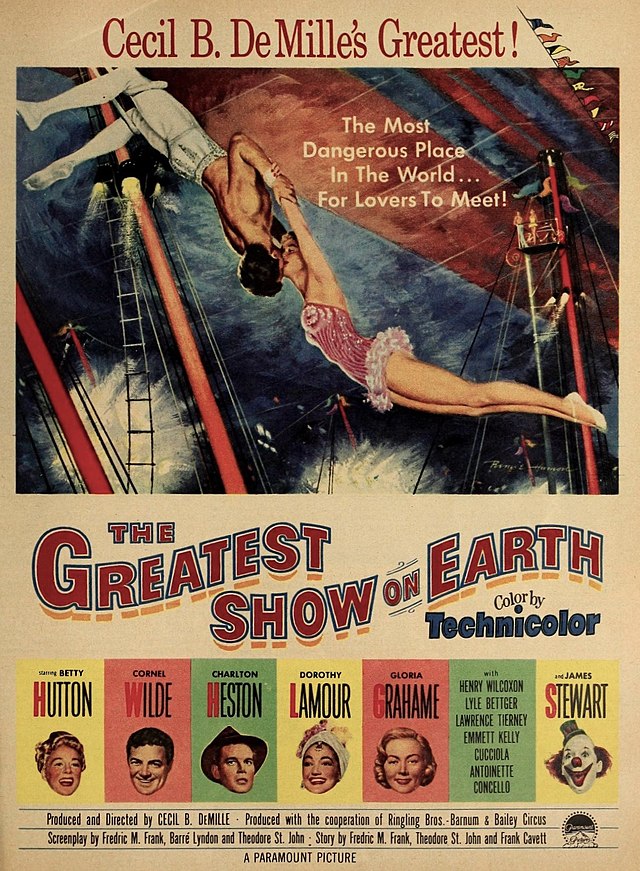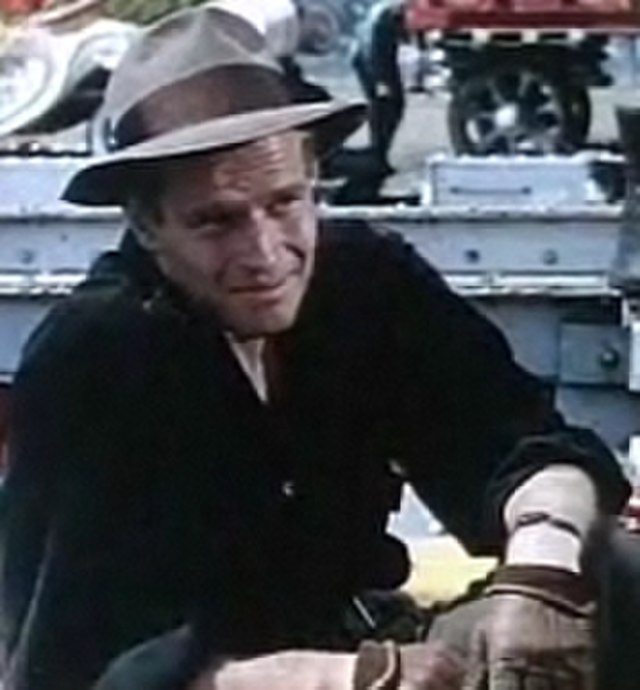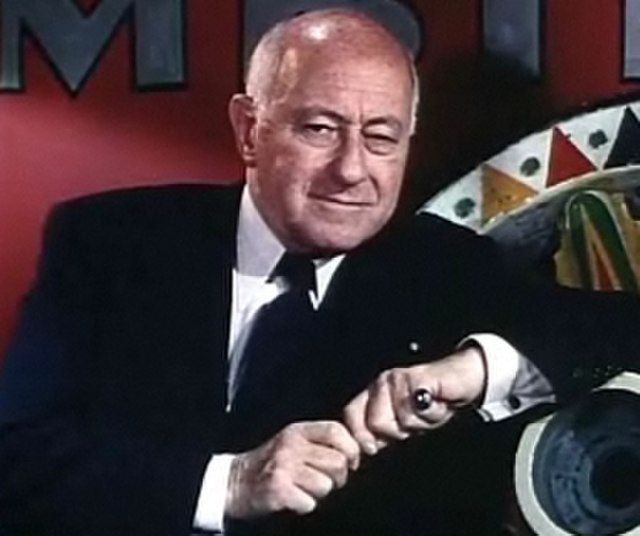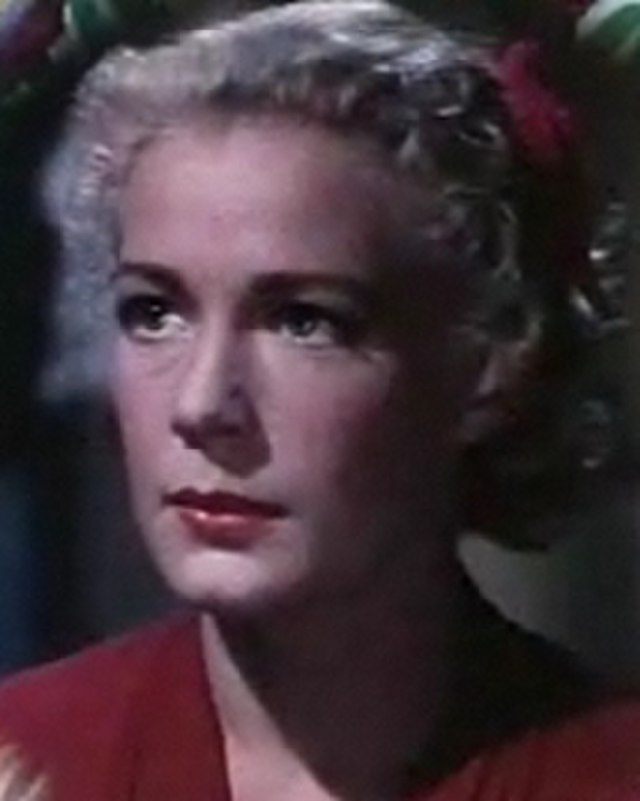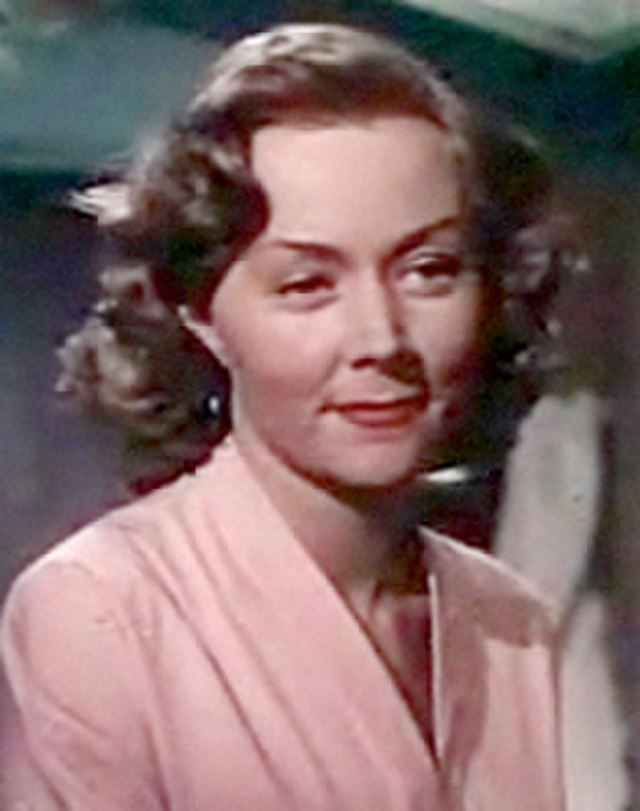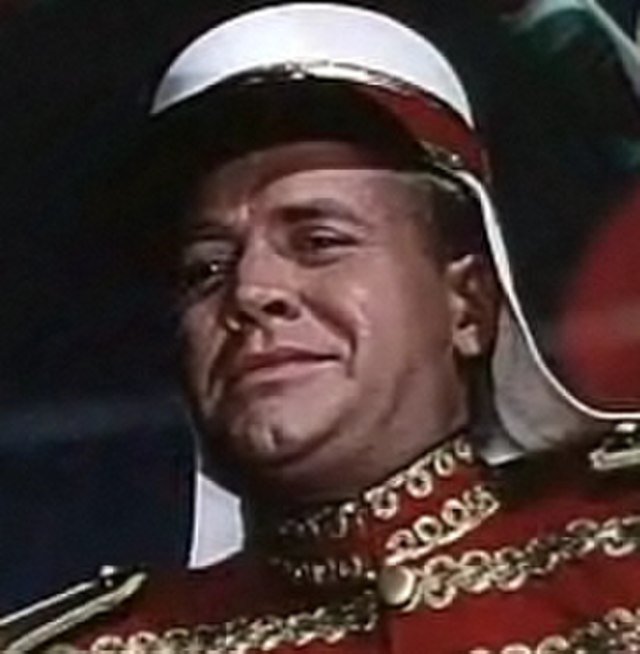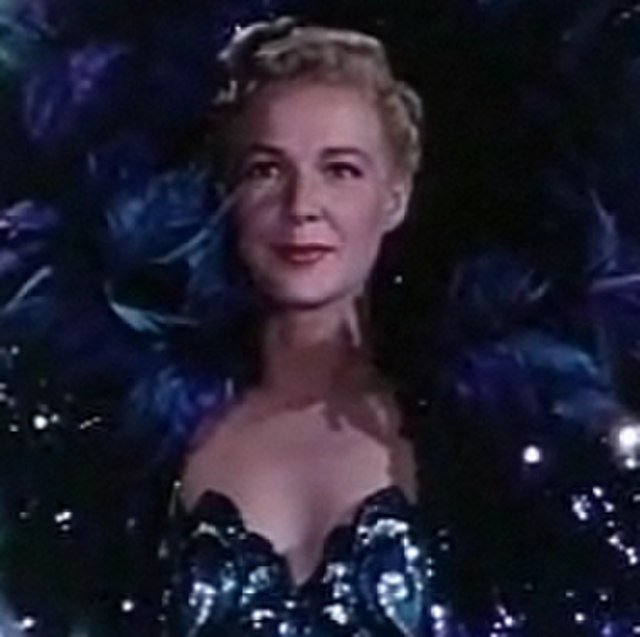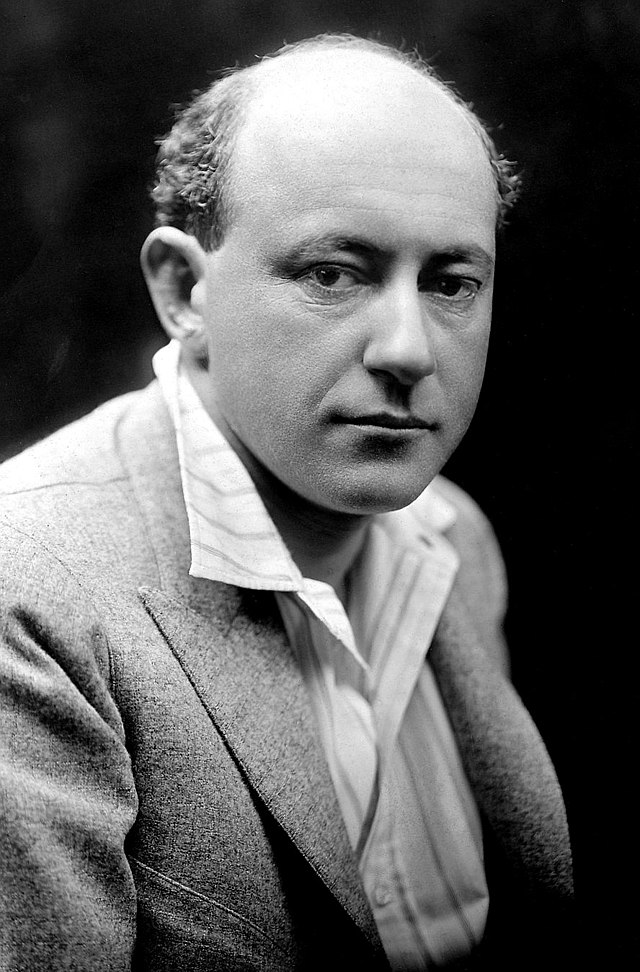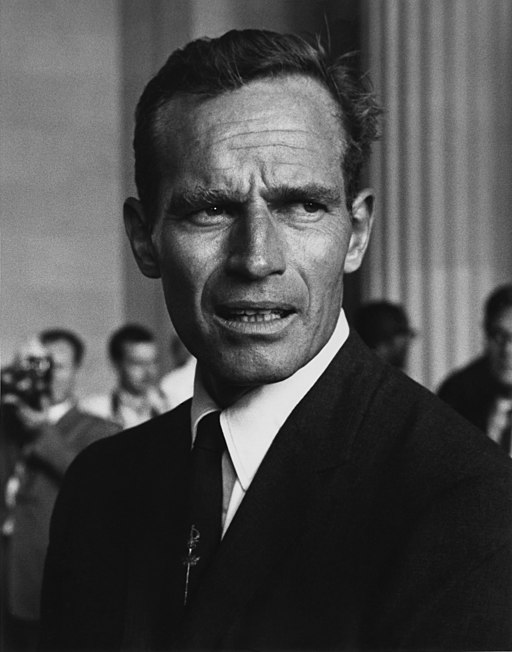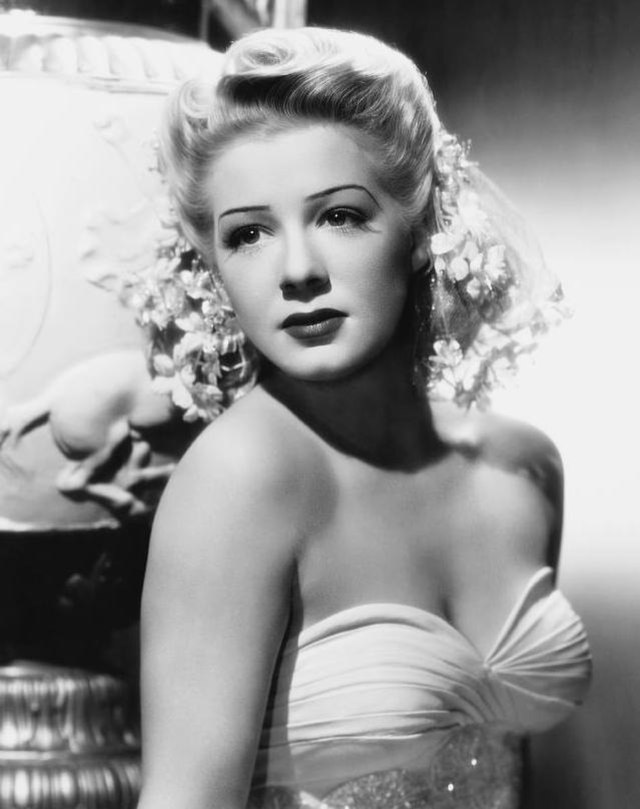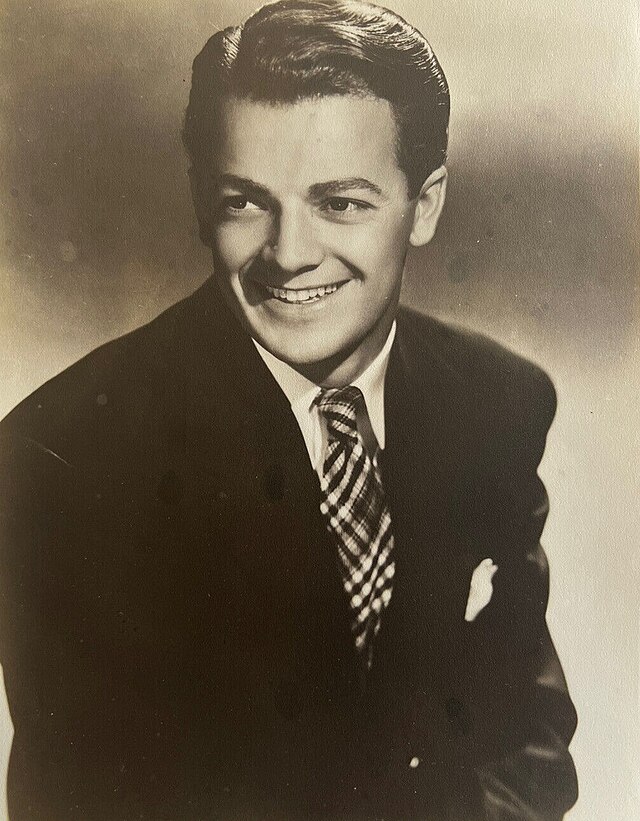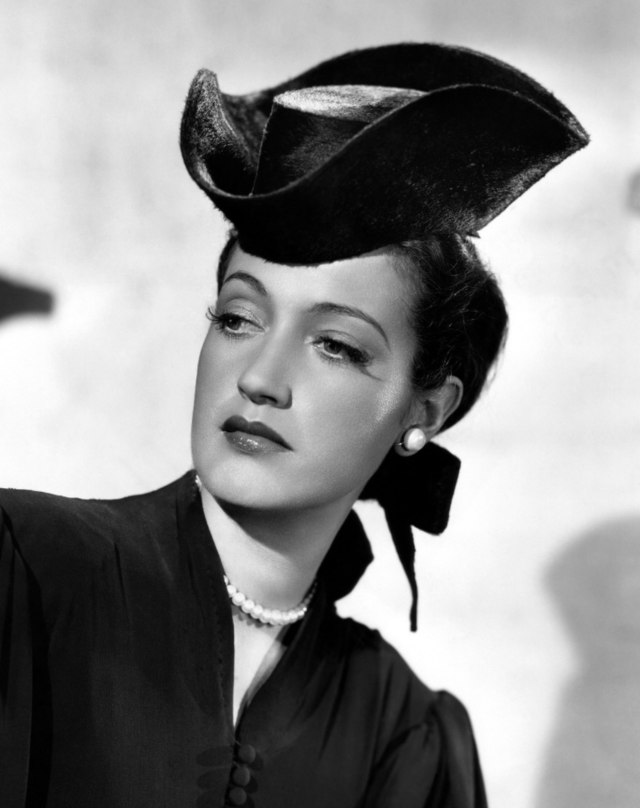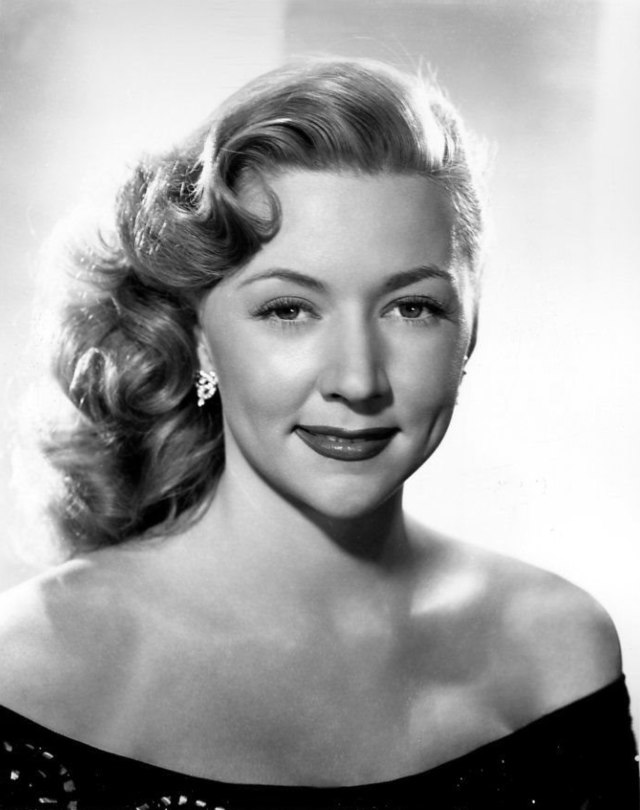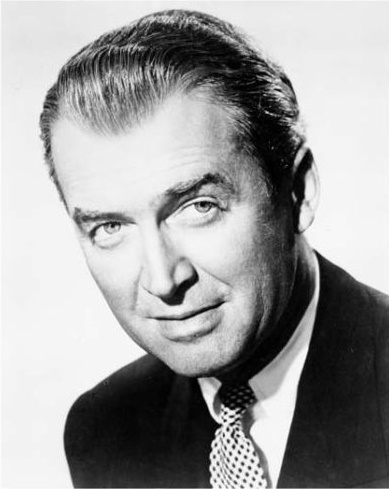The Greatest Show on Earth - 1952
back| Released by | Paramount Pictures |
| Director | Cecil B. DeMille |
| Producer | Cecil B. DeMille |
| Script | Written by Fredric M. Frank, Theodore St. John, and Frank Cavett |
| Cinematography | George Barnes |
| Music by | Victor Young |
| Running time | 152 minutes |
| Film budget | $4 million |
| Box office sales | $36 million |
| Main cast | Charlton Heston - Betty Hutton - Cornel Wilde - Dorothy Lamour - Gloria Grahame |
The Greatest Show on Earth
A Dazzling Circus Spectacle of Love, Rivalry and Resilience
The Greatest Show on Earth (1952), directed by Cecil B. DeMille, is a grand, Technicolor spectacle that follows the lives, loves, and rivalries of circus performers.
Central to the story is Brad Braden (Charlton Heston), a stoic circus manager, juggling professional and romantic tensions between trapeze artists Holly (Betty Hutton) and "The Great Sebastian" (Cornel Wilde).
The film's dramatic highlights include a spectacular trapeze duel and a thrilling train wreck, emphasizing themes of ambition, sacrifice, and resilience.
Related
The Greatest Show on Earth – 1952
The Greatest Show on Earth (1952) is a grand spectacle of circus life, directed by the legendary Cecil B. DeMille. The film unfolds as a vibrant, colorful celebration of the inner workings of the circus, capturing the pageantry, drama, and peril of a world filled with performers, animals, and the bustling excitement of life under the big top. DeMille’s narrative weaves together a mix of human stories that revolve around love, ambition, rivalry, and sacrifice, set against the backdrop of the circus's intricate machinery.
Plot Summary
The film begins with Brad Braden (Charlton Heston), the determined and no-nonsense manager of the Ringling Bros. and Barnum & Bailey Circus. Braden is committed to keeping the circus afloat financially and is thrilled to learn that the show will go on for a full season rather than being cut short, but he faces a dilemma. The management has hired a famous trapeze artist, "The Great Sebastian" (Cornel Wilde), to headline the show, which means his girlfriend and star trapeze artist Holly (Betty Hutton) will be demoted to a secondary act. Holly is fiercely competitive and hurt by this decision, leading to tension between her and Sebastian.
Sebastian, known for his daring and flamboyant style, immediately causes a stir within the circus. His reckless bravado on the trapeze creates a rivalry with Holly, who is equally determined to prove she is the best. As they challenge each other, both take increasingly dangerous risks, which culminates in a near-fatal accident when Sebastian falls during one of their performances. He is severely injured, which forces him out of the trapeze act and humbles his character, bringing him closer to Holly on an emotional level.
While the central romance between Brad, Holly, and Sebastian unfolds, there are several subplots involving other circus members. Buttons the Clown (James Stewart) is a mysterious figure who never removes his makeup. His backstory is tragic: he is a former doctor who, in an act of mercy, euthanized his terminally ill wife. To avoid arrest, he now hides within the circus, performing his clown duties while carrying the weight of his secret.
Meanwhile, another storyline focuses on Angel (Gloria Grahame), who works with the circus elephants and finds herself caught in a love triangle with the circus’s elephant trainer, Klaus (Lyle Bettger), and another performer, Phyllis (Dorothy Lamour). Klaus’s jealousy and anger add tension to the story, which leads to dangerous situations within the circus.
The film’s climax occurs when a jealous circus employee, Harry, conspires to sabotage the circus train, leading to a massive crash. The crash scene is one of the most famous moments in cinematic history for its scale and special effects. As the circus train derails, chaos ensues, with animals freed and people injured. Brad, who has been stoic and driven throughout the film, is gravely injured. In a dramatic turn, Buttons must reveal his true identity as a doctor to save Brad’s life, risking exposure and arrest in the process.
The film ends on a triumphant note as the circus, despite the disaster, vows to continue its performances. Holly, having reconciled her feelings, takes the reins of the show, leading the parade in a final grand spectacle. The show, as they say, must go on.
Analysis
The Greatest Show on Earth is a film that reflects Cecil B. DeMille's signature style—lavish production, dramatic storytelling, and a sense of grandeur that elevates the narrative beyond a mere romance or adventure. DeMille was known for his ability to combine entertainment with spectacle, and this film is no exception. The circus setting allows for dazzling displays of color and movement, with the camera lingering on the excitement of trapeze acts, parades, and performances.
Thematically, the film explores ideas of ambition, love, and sacrifice. Brad’s single-minded dedication to the circus serves as the backbone of the narrative, symbolizing the larger-than-life commitment required to keep such a grand enterprise running. His stoicism contrasts with Holly’s fiery determination and Sebastian’s flamboyant charm, creating a triangle that hinges not only on romance but also on professional pride.
The subplot involving Buttons the Clown adds a darker, more serious undertone to the otherwise vibrant world of the circus. His tragic backstory brings depth to the film, offering a meditation on guilt, redemption, and the weight of moral choices. James Stewart’s understated performance as Buttons is one of the film’s highlights, providing a counterbalance to the larger-than-life performances around him.
The film’s climax—the train wreck—symbolizes the inevitable chaos that accompanies such high-stakes lives. It serves as both a literal and metaphorical crash, tearing apart the carefully constructed world of the circus and its performers. Yet, true to DeMille’s optimistic style, the film ends on a hopeful note. Despite the disaster, the performers come together, and the circus prevails, a testament to the human spirit’s resilience and determination to press on even in the face of adversity.
Visually, The Greatest Show on Earth is a masterpiece of Technicolor, with its vibrant hues bringing the spectacle of the circus to life. The use of real circus performers and acts lends authenticity to the film, while DeMille’s direction ensures that every scene is brimming with life and movement.
Legacy and Reception
Upon its release, The Greatest Show on Earth was a commercial success, and it went on to win the Academy Award for Best Picture in 1953, much to the surprise of many critics. Over the years, the film has been regarded as one of the lesser Best Picture winners, with some feeling that its win was more a recognition of DeMille’s career than the film’s artistic merits. Nonetheless, it remains a beloved classic for its sheer spectacle and ambitious storytelling.
One of the criticisms often leveled at the film is its somewhat melodramatic tone and its focus on spectacle over substance. Some argue that it lacks the depth of more introspective or character-driven films. However, for DeMille, the spectacle was the substance—his films were about larger-than-life stories, and The Greatest Show on Earth is a prime example of this. It offers audiences a vivid, immersive experience that showcases the glamour, danger, and romance of circus life, all while highlighting the humanity behind the glittering facade.
In retrospect, The Greatest Show on Earth can be seen as a time capsule of a bygone era, both in terms of its subject matter and its filmmaking style. The circus, once a major form of entertainment, has since faded in cultural relevance, but DeMille’s film immortalizes its magic for future generations.
Classic Trailer from The Greatest Show on Earth
Full Cast
· Charlton Heston as Brad Braden
· Betty Hutton as Holly
· Cornel Wilde as "The Great Sebastian"
· James Stewart as Buttons the Clown
· Dorothy Lamour as Phyllis
· Gloria Grahame as Angel
· Henry Wilcoxon as FBI Agent Gregory
· Lyle Bettger as Klaus (the elephant trainer)
· Lawrence Tierney as Mr. Henderson
· Emmett Kelly as Emmett Kelly (himself, a real-life clown)
· Cecil B. DeMille as the narrator (voice)
· John Ridgely as Assistant Manager (uncredited)
· Julia Faye as Birdie
· John Kellogg as Harry (the saboteur)
· Fay Wray as Hysterical Woman (uncredited)
· Thomas Gomez as Spectator (uncredited)
· Leif Erickson as the Doctor (uncredited)
Analysis of Cecil B. DeMille’s Direction
Cecil B. DeMille's direction in The Greatest Show on Earth (1952) epitomizes his grand, larger-than-life approach to filmmaking, which has cemented his legacy as one of Hollywood’s most iconic directors. Known for his ability to weave spectacle and drama, DeMille's direction is meticulous, ambitious, and deeply rooted in the tradition of epic storytelling. His work on this film showcases his strengths in managing sprawling narratives, balancing human emotion with grand visuals, and capturing the spectacle of the circus in a way that few directors of the time could.
DeMille’s Vision for the Circus
DeMille was famous for his attention to detail and his love for grand spectacle, and in The Greatest Show on Earth, these traits shine. His choice to set the film in the world of a traveling circus gave him the perfect canvas to display one of his most ambitious productions. From the start, his vision is clear: to immerse the audience into the vibrant, chaotic, and often dangerous world of the circus, creating an experience that goes beyond simply telling a story.
He achieves this immersion by using actual circus performers and including real circus acts, allowing the authenticity of the environment to elevate the film. DeMille made a point of capturing the atmosphere of the circus in all its complexity, from the flamboyant costumes and vibrant parades to the raw physicality of trapeze acts and the precarious danger faced by performers. Every shot and sequence is crafted to draw the audience into the magic and grit of circus life.
Handling of Spectacle
DeMille's signature as a director was his ability to orchestrate large, extravagant sequences that overwhelm the senses, and The Greatest Show on Earth is a prime example of this. His handling of the circus acts—particularly the trapeze scenes—reflects his masterful use of cinematic spectacle. These sequences are visually stunning, designed to keep the audience on the edge of their seats. DeMille builds tension and suspense through expert pacing and camera work, ensuring that every leap, swing, and fall feels like a life-or-death moment.
Perhaps the most famous scene under DeMille’s direction is the massive circus train wreck, a dramatic and intense sequence that required complex special effects. DeMille orchestrates the scene to not only be visually spectacular but also a pivotal emotional climax for the characters. The train crash serves as the literal and symbolic unraveling of the characters’ lives, and DeMille masterfully interweaves destruction with personal redemption, heightening the stakes for both the audience and the performers. His ability to balance the visual grandeur with emotional depth is a hallmark of his work.
Directing the Performers
While DeMille was known for spectacle, he was also adept at handling actors, coaxing memorable performances from them even in the midst of grand visual sequences. In The Greatest Show on Earth, he pulls together a large ensemble cast and gives each actor room to develop their characters, despite the focus on the larger circus backdrop.
Charlton Heston, in one of his early roles, embodies the stoic and driven Brad Braden, whose unwavering commitment to the circus mirrors DeMille’s own dedication to his craft. DeMille draws out Heston’s natural intensity and physical presence, making Brad a commanding figure in the film. With Betty Hutton, who plays the fiery trapeze artist Holly, DeMille allows her character's competitive energy and determination to come through in both her performances on the trapeze and her interactions with the other characters.
The direction of Cornel Wilde as "The Great Sebastian" is another example of DeMille’s ability to blend character work with spectacle. Wilde’s performance, infused with arrogance and charm, comes to life through DeMille’s direction, particularly in the trapeze scenes, where Sebastian’s recklessness and showmanship are emphasized. The rivalry between Holly and Sebastian becomes a central emotional arc of the film, and DeMille ensures that their performances on the trapeze serve as extensions of their internal conflicts, elevating the personal drama to a visual level.
James Stewart’s portrayal of Buttons the Clown adds a darker, more introspective layer to the film, and DeMille handles his character with subtlety. Despite the larger-than-life world around him, Stewart’s performance is grounded, with DeMille directing him to act almost entirely through his clown persona, allowing the audience to gradually peel back the layers of Buttons’ tragic backstory. DeMille’s decision to keep Stewart in clown makeup throughout the film adds to the mystery and pathos of the character, a directorial choice that deepens the emotional impact of Buttons’ reveal in the film’s climax.
Thematic Exploration
DeMille’s direction in The Greatest Show on Earth goes beyond spectacle to explore deeper themes of dedication, sacrifice, and the pursuit of greatness. The circus, with all its beauty and danger, becomes a metaphor for life itself—full of risks, unpredictable moments, and the constant need to persevere. DeMille is careful to highlight the duality of circus life: the dazzling, glamorous surface and the grueling, often dangerous work that goes on behind the scenes.
The film’s recurring theme, encapsulated in the famous line “The show must go on,” reflects DeMille’s own philosophy as a filmmaker. No matter the disasters or personal challenges, the performers (and by extension, the director) must keep pushing forward. This idea permeates the film’s structure and tone, as each character, from Brad to Holly to Sebastian, faces personal and professional hurdles that test their limits. DeMille underscores this theme through his direction, where every high-wire act and dangerous stunt represents the risk inherent in living such a life.
DeMille’s Signature Narrative Style
The film also exemplifies DeMille’s narrative style, which often includes moral lessons wrapped in entertainment. While The Greatest Show on Earth is filled with romance, action, and spectacle, there is also a moral undercurrent, particularly in the character arc of Buttons the Clown. DeMille does not shy away from the heavier themes of guilt, redemption, and the consequences of past actions. In Buttons' storyline, DeMille subtly explores the idea of moral complexity, using his signature style of mixing melodrama with deeper human truths.
DeMille’s direction also involves a strong sense of pacing. Despite the film’s lengthy runtime (152 minutes), he maintains momentum by interspersing dramatic scenes with moments of spectacle and action, ensuring that the audience is never too far from the next breathtaking circus act. His expert balancing of these elements keeps the film engaging, moving seamlessly from romantic drama to intense physical action.
Conclusion
In The Greatest Show on Earth, Cecil B. DeMille delivers a film that is as much a testament to his own style as it is a celebration of the circus. His direction is marked by its grand ambition, meticulous attention to detail, and the blending of spectacle with human emotion. Through his leadership, the film becomes not just an epic story of the circus but also a reflection on the dedication required to achieve greatness. DeMille’s ability to elevate a simple narrative into a sweeping, emotional, and visual epic stands as a defining characteristic of his directorial style, cementing the film’s place in cinematic history.
Commanding Performance of Charlton Heston
Charlton Heston’s performance in The Greatest Show on Earth (1952) is a pivotal part of the film’s success, as he brings a commanding presence to the role of Brad Braden, the circus manager whose dedication to his profession defines much of the story. In this early stage of his career, Heston displayed many of the qualities that would later make him a Hollywood icon—strength, stoicism, and a gravitas that gave weight to the characters he portrayed.
Characterization and Physicality
Heston’s portrayal of Brad Braden is marked by a quiet intensity that serves as the emotional anchor of the film. Brad is a man of few words, but his actions speak volumes, and Heston skillfully embodies this strong, silent archetype. His physical presence is immediately commanding, and his tall, muscular frame enhances the character’s leadership role within the circus. Heston’s body language communicates Brad’s authority; he moves with purpose and confidence, whether he’s managing logistics or overseeing the performances.
In scenes where Brad is dealing with the performers or solving problems behind the scenes, Heston conveys a sense of unshakeable control. There’s an efficiency and professionalism in how he carries himself, underscoring his character’s commitment to keeping the circus running smoothly. Heston often plays Brad with a calm exterior, even in moments of high tension, which contrasts with the chaos of the circus around him. This calmness in the face of pressure is a hallmark of Heston’s acting style—he projects an inner strength that makes Brad feel like a natural leader.
The Stoic Hero
Brad’s stoicism is one of the key elements of Heston’s performance, and it’s a quality that would define many of his later roles, from Ben-Hur to Planet of the Apes. In The Greatest Show on Earth, this stoicism reflects the weight of responsibility Brad carries. The circus is his life, and Heston portrays Brad as a man who has sacrificed personal happiness for the greater good of the show. His relationship with Holly (Betty Hutton), for example, is strained because Brad is so focused on the business of the circus that he neglects their personal connection. Heston communicates this internal conflict through subtle facial expressions and moments of quiet reflection, showing that Brad’s tough exterior hides a deep sense of duty.
Heston also plays Brad as someone who is willing to make hard decisions, even at the cost of his own happiness or relationships. When the management brings in “The Great Sebastian” (Cornel Wilde), Brad has no choice but to demote Holly from the starring trapeze act. In these moments, Heston conveys Brad’s pragmatism and professionalism, showing that while he cares about Holly, his first loyalty is always to the circus. His eyes and tone suggest a deep conflict, but Heston avoids overplaying the emotion, instead letting Brad’s actions speak for his inner turmoil.
Emotional Range and Understated Depth
Though Brad Braden is a stoic figure for most of the film, Heston does allow glimpses of vulnerability and emotional depth in key moments. One of the most significant shifts in his performance comes during the train wreck sequence. After the crash, Brad is seriously injured, and it’s in this moment of physical and emotional weakness that Heston’s performance shifts from quiet strength to raw vulnerability. As Brad lies helpless, his stoic façade crumbles, and Heston shows the character’s human fragility. It’s a brief but powerful moment that reveals the emotional cost of Brad’s sacrifices for the circus.
Throughout the film, Heston’s performance is layered with a sense of suppressed emotion. Though Brad is in control of the circus, there are moments when Heston lets small cracks show in his character’s armor—fleeting expressions of disappointment, frustration, or longing. These moments prevent Brad from being a one-dimensional leader and give him a sense of humanity. Heston carefully balances these subtle displays of emotion with the larger-than-life leadership qualities that dominate Brad’s character, creating a figure who feels both heroic and relatable.
Chemistry with Other Cast Members
Heston’s interactions with the other cast members also highlight his versatility as an actor. His chemistry with Betty Hutton (Holly) is central to the film’s romantic subplot. Though Brad and Holly’s relationship is strained by their professional rivalry and Brad’s dedication to the circus, Heston plays Brad with a reserved affection for Holly, always hinting at the depth of his feelings beneath his composed exterior. The tension between them is palpable, and Heston allows Brad’s emotions to surface subtly, particularly in scenes where Holly challenges his decisions.
In contrast, Heston’s dynamic with Cornel Wilde’s Sebastian is built on professional rivalry. The tension between Brad and Sebastian is less emotional and more about competition for Holly’s attention and their respective status within the circus. Heston plays Brad as the no-nonsense leader, while Wilde’s Sebastian is flamboyant and charismatic. The contrast between their characters adds a layer of tension to their interactions, with Heston’s calm authority often serving as a foil to Wilde’s showmanship.
Heston’s scenes with James Stewart’s Buttons the Clown are more understated but significant. Brad’s interactions with Buttons are largely professional, but there’s an underlying respect that Heston communicates through small gestures and tone. When Buttons saves Brad’s life after the train crash, Heston’s gratitude and vulnerability are palpable, marking one of the few times Brad’s tough exterior completely dissolves.
Heston’s Breakthrough Role
The Greatest Show on Earth was one of Heston’s earliest leading roles, and it served as a showcase for the qualities that would define his career: his ability to embody strong, heroic figures, his command of the screen, and his ability to convey internal conflict through subtle, restrained acting. In this film, Heston’s performance stands out not only because of his physical presence but also because of his ability to balance Brad’s professionalism with his unspoken emotions.
This role positioned Heston as an actor capable of playing complex, larger-than-life characters. His Brad Braden is a man who represents strength and resilience, yet Heston never allows him to become emotionally inaccessible. Through his nuanced performance, Heston gives Brad just enough vulnerability to make him relatable while maintaining the gravitas that makes him a natural leader. It was this combination of qualities that would make Heston one of the most enduring stars of the Hollywood epic in the years to come.
Conclusion
Charlton Heston’s performance in The Greatest Show on Earth is a masterclass in controlled intensity. He plays Brad Braden with a blend of stoic authority and restrained emotion, making him a compelling and relatable character despite his larger-than-life role as circus manager. Heston’s ability to convey internal conflict through subtle gestures and facial expressions, combined with his commanding physical presence, makes his performance stand out in a film dominated by spectacle. It was an early example of the qualities that would define Heston’s career and solidified him as a rising star in Hollywood.
Notable Movie Quotes from The Greatest Show on Earth
Brad Braden (Charlton Heston):
- "You can't ask a man to stand on a wire and be safe at the same time."
Brad says this to reflect the inherent risks that come with life in the circus, and it symbolizes his belief in taking risks to achieve greatness.
Buttons the Clown (James Stewart):
- "You know, the circus is a jealous wench. Admit you're in love with her and she'll break your heart. But love her truly and she'll be with you always."
Buttons reflects on the relationship performers have with the circus, personifying it as a demanding mistress that requires complete devotion, capturing one of the film's central themes about sacrifice and dedication.
Brad Braden (Charlton Heston):
- "The show must go on."
This famous line is a recurring theme in the movie and a philosophy that drives Brad’s character. It underscores the circus's need to continue, no matter the challenges or personal sacrifices.
Sebastian (Cornel Wilde):
- "They say you can’t have everything. But I seem to have found a way to have everything I want and a little more."
Sebastian's cocky remark when he first enters the circus reflects his confidence and daring attitude, which later leads to his rivalry with Holly.
Holly (Betty Hutton):
- "You don't need a safety net when you’re born to fly."
Holly says this with determination and competitive spirit, symbolizing her drive to be the best trapeze artist. This also reflects the high risks performers take in the circus.
Buttons the Clown (James Stewart):
- "I killed her... with these hands."
This emotional confession is when Buttons reveals his dark past, showing the depth of his character and the burden he has carried while hiding under his clown persona.
Brad Braden (Charlton Heston):
- "You can’t be a star and run a circus too."
Brad says this to Holly, trying to emphasize that running the circus requires focus and sacrifices, not the distractions of personal ambition.
Classic Film Scenes from The Greatest Show on Earth
The Greatest Show on Earth (1952) features several classic scenes that showcase the grandeur and drama of the circus world. Cecil B. DeMille, known for his epic scale and flair for spectacle, created a number of visually stunning and emotionally charged moments in this film. Here are some of the most iconic scenes:
The Opening Parade Scene
- Significance: The film opens with a lavish, vibrant parade that introduces the audience to the world of the circus. This scene is filled with colorful costumes, elaborate floats, animals, and performers, capturing the joy and spectacle of the circus. The grandeur of the parade establishes the larger-than-life nature of the circus, setting the tone for the entire film. It is a visual feast, bursting with energy, and serves to pull the viewer into the excitement of circus life.
- Classic Element: The parade showcases DeMille’s love for large-scale, Technicolor visuals and meticulous attention to detail. It's a testament to the film's authenticity, featuring real circus acts and performers, blending spectacle with storytelling.
Holly and Sebastian’s Trapeze Duel
- Significance: One of the most famous sequences in the film is the trapeze duel between Holly (Betty Hutton) and "The Great Sebastian" (Cornel Wilde). In this scene, both trapeze artists engage in a high-stakes competition to outdo each other during a live performance. The rivalry between the two, fueled by personal and professional jealousy, leads them to perform increasingly dangerous stunts without safety nets.
- Classic Element: This scene highlights DeMille’s skill at building suspense and tension. The camera captures the performers’ swings, flips, and daring moves high above the circus floor. The physicality and danger of the act are palpable, with each swing of the trapeze adding to the intensity. The sequence also reflects the characters’ emotional stakes—Holly’s desire to prove herself and Sebastian’s recklessness.
The Circus Train Wreck
- Significance: The circus train crash is arguably the most iconic scene in The Greatest Show on Earth. A jealous employee, Harry, sabotages the train, causing a catastrophic collision that derails the entire circus operation. This sequence is a masterclass in 1950s special effects, featuring crashing locomotives, derailed train cars, and the chaos of injured animals and performers trying to escape the wreckage.
- Classic Element: The sheer scale and ambition of the train crash scene are classic DeMille. The special effects were groundbreaking at the time, and the tension leading up to the crash is expertly handled. The sequence serves as both a visual and emotional climax, bringing the characters’ struggles to a head. Amid the destruction, the theme that “the show must go on” emerges stronger than ever, as the performers vow to rebuild and continue the circus.
Buttons the Clown’s Confession
- Significance: One of the most emotionally powerful scenes in the film involves Buttons the Clown (James Stewart) revealing his tragic backstory. Throughout the film, Buttons is a mysterious figure who always wears clown makeup and is loved by the circus community. In a climactic moment, when Brad (Charlton Heston) is gravely injured after the train crash, Buttons is forced to reveal his true identity as a former doctor. He had been on the run after euthanizing his terminally ill wife out of love.
- Classic Element: This moment adds a dramatic layer to the film, showcasing James Stewart’s understated and poignant performance. The scene offers a glimpse into the darker side of circus life, where the performers hide their pain and past behind makeup and performances. Stewart’s quiet, emotional confession contrasts with the action-packed circus sequences, providing a moment of introspection in the film’s otherwise fast-paced narrative.
The Final Parade
- Significance: After the devastation of the train wreck, the circus performers refuse to give up and decide to continue with the show, led by Holly, who steps into the role of ringmaster. The final parade through the town is a symbol of resilience and determination, as the battered and bruised circus troupe marches on despite the disaster they have just endured.
- Classic Element: This scene reinforces the film’s central theme: the show must go on, no matter what challenges arise. The parade is a triumphant moment, filled with the energy of recovery and hope. Holly’s transformation from a self-centered performer to a leader who takes responsibility for the circus reflects her character’s growth, and the entire sequence becomes a celebration of the indomitable human spirit.
The Lion Taming Act
- Significance: In this tense scene, Holly must stand inside a cage full of lions, accompanied by the circus’s lion tamer, Klaus (Lyle Bettger). The scene becomes a harrowing display of danger and the risks performers take in their profession. The lions, roaming freely around the cage, create an air of unpredictability, adding suspense to the moment.
- Classic Element: DeMille uses this scene to emphasize the physical risks that circus performers face daily. The visceral danger of the act, combined with Holly’s determination to prove herself, reflects the film’s recurring motif of characters pushing themselves to the limit. The use of real animals adds authenticity and heightens the tension, making the audience feel the immediate threat to the characters' safety.
The Trapeze Accident
- Significance: One of the film’s pivotal moments is when Sebastian, while trying to outshine Holly on the trapeze, miscalculates and falls, severely injuring his hand. The accident changes Sebastian’s life, forcing him to reassess his arrogance and recklessness. His injury also shifts the dynamic between Holly and him, as they move from rivals to allies.
- Classic Element: This scene is a turning point in the film and a prime example of DeMille’s ability to mix spectacle with character development. The fall is a dramatic moment, filmed with high intensity and tension, but it also marks a shift in Sebastian’s character, humbling him and allowing for his redemption arc.
Awards and Recognition
Academy Awards (1953)
- Won:
Best Picture (Producer: Cecil B. DeMille)
Best Story (Fredric M. Frank, Theodore St. John, Frank Cavett)
- Nominated:
Best Director (Cecil B. DeMille)
Best Film Editing (Anne Bauchens)
Best Costume Design, Color (Edith Head, Dorothy Jeakins, and Miles White)
Golden Globe Awards (1953)
- Won:
Best Motion Picture – Drama
Best Director – Motion Picture (Cecil B. DeMille)
Best Cinematography – Color (George Barnes)
Other Awards:
- Directors Guild of America (DGA) Awards (1953)
Nominated: Outstanding Directorial Achievement in Motion Pictures (Cecil B. DeMille)
- Writers Guild of America (WGA) Awards (1953)
Nominated: Best Written American Drama (Fredric M. Frank, Theodore St. John, Frank Cavett)
- National Board of Review (1952)
Top Ten Films
Legacy Honors:
- National Film Registry (2005): Selected for preservation by the Library of Congress as being "culturally, historically, or aesthetically significant."

